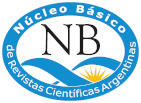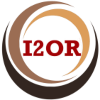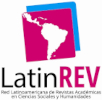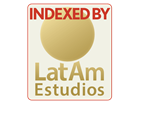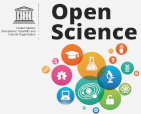Author Guidelines
ARTILUGIO is an open-access e-journal that addresses diversity in the contemporary arts through the integration of the performing, visual, audiovisual, and sound arts, as well as through performance art, artivism, and action art, among other liminal practices. Artilugio’s main interest lies in interdisciplinary, transdisciplinary, and indisciplinary practices and in the different approaches taken in the study of contemporary arts.
Artilugio is coordinated by the Arts Production and Research Center (CePIA) of the Faculty of Arts, National University of Córdoba (UNC), and calls for original and unpublished academic essays, artistic productions, and artistic projects. Submissions aiming at publication in the section “Indeterminación” are subject to a single-blind review process, while those aiming at publication in the section “Reflexiones” are subject to a double-blind peer review process. Artilugio engages artists, researchers, critics, and theorists in discussions with the academic and artistic communities and with the general public interested in artistic and cultural practices.
ARTILUGIO has been indexed in the following databases, directories, and international networks: Latindex (Catalog 2.0), Núcleo Básico, REDIB, CORE, ERIH PLUS, BASE, PKP Index, EuroPub, ROAD, DRJI, I2OR, RevistasAA.net, ICI World of Journals, Latinoamericana Revistas, MIAR, DARDO, Modern Language Association, LatAm-Studies, Advanced Sciences Index, CiteFactor, JournalTOCs, SIUBDU, Biblioteca Electrónica de Ciencia y Tecnología, Mirabel, LatinREV, Sherpa-Romeo, Malena (CAICyT-CONICET), AURA. Artilugio is also under evaluation for indexing in other databases and directories.
ARTILUGIO calls for academic essays and artistic productions in digital visual, audiovisual, or audio formats. A central theme is proposed for each issue in the hope that all published work provides particular viewpoints to it.
___________________
“REFLEXIONES” || Open call for research papers and essays
“Reflexiones” calls for academic essays from any field of study related to the arts. This section proposes working on the proposed theme from revealing or groundbreaking case studies that might be related to the author(s) or be external to them and that allow for the emergence of spaces of reflection among researchers and artists.
Submitted texts are subject to a double-blind peer review process and evaluated by Ad Hoc Reviewers that assesses the methodological and formal coherence of each work, as well as its contributions to the corresponding field of study and the unique approach adopted concerning the central theme proposed.
GENERAL GUIDELINES
- Works might be presented by one author or by at least 4 co-authors.
- The submitted works must be original and unpublished. They must not have been published elsewhere before and they must not be under pending approval by another journal. If an earlier version of the article has been presented in a conference or in another academic meeting, this earlier version must be included in the reference list of the submitted article.
- Articles must be related to any artistic field of study and address the central theme proposed for each issue.
- Submission must take place before the set deadline. Works that are submitted after this date will not be taken into consideration.
- Author(s) must read and accept Artilugio’s “Code of Ethics” and plagiarism policy and mention any type of conflict of interest. They must also have been granted the licenses necessary to reproduce the figures, tables, photographs, images, artworks, videos, sound recordings and other documentary sources included in the article that require publishing permissions, in this way exempting the journal from any issue derived from an infringement of copyright.
- Author(s) who submit articles retain copyright but transfer first-publication rights to Artilugio in compliance with Creative Commons Attribution-NonCommercial-ShareAlike 4.0 International license (CC BY-NC-SA 4.0). This license allows third parties to use the published material for noncommercial purposes as long as appropriate credit is given and both author(s) and this journal’s names are mentioned. If third parties create new material using the original work as source (such as a translation), they must distribute their contributions under the same license as the original.
- Artilugio publishes annually on September 1st. The deadline to submit originals is March 1st. Works that are submitted after this date will not be taken into consideration.
- Submitting an article implies acknowledging and accepting these guidelines and the editorial policies adopted by Artilugio.
PUBLICATION REQUIREMENTS AND PAPER SUBMISSION
Author(s) interested in participating in a call for papers must email their proposed article to artilugio@artes.unc.edu.ar as an attachment.
Only those texts that meet the following criteria will be accepted:
- Only editable text files in an OpenOffice (.odt), Microsoft Word (.doc or .docx), or RTF format. NO texts in PDF format will be accepted.
- A4 paper size (210 x 297 mm - 8.3 x 11.7 in).
- 12 pt. Calibri font text.
- 1.5 line spacing and justified text.
- No spaces between paragraphs.
- Indentation: five spaces in the first line of all paragraphs.
- No more than 5000 words per paper.
- Papers must include:
- A title (up to 15 words).
- A title in English.
- Author(s)’ names and last names. See more information on Author(s)’s Names Standardization here.
- Professional affiliation. See more information on Professional Affiliations Standardization here.
- City and country.
- E-mail.
- ORCiD.
- An abstract in either Spanish or Portuguese (no more than 200 words.)
- Keywords in either Spanish or Portuguese (up to 5) in compliance with Art & Architecture Thesaurus - GRI (click here) or Vitruvio (click here). They must be separated by a comma.
- An English version of the abstract (no more than 200 words.)
- An English version of the keywords (no more than 5 words separated by a comma), in compliance with Art & Architecture Thesaurus - GRI (click here).
- Main body of text in either Spanish or Portuguese.
- Bibliography and resources.
- Acknowledgments.
- A picture and a brief biographical description of each author (no more than 5 lines each) at the end of the paper. If you have a website, add a link to it.
- Quotes, references, bibliography, filmography, discography and other sources, which must follow APA Citation style (6th edition or later editions - https://apastyle.apa.org). You can consult a quick guide to these citation rules here >>. References must be added at the end of the paper and include all the authors or cited works in the main body of text (and vice versa). Bibliography that has not been cited must not appear in the reference list.
- You can download a template for your paper here >>.
- Author(s) can send up to ten images that may either accompany or reference the content of the article -up to 1 MB each. They can be sent as attachments or be uploaded to a shared folder in Google Drive, Dropbox, One Drive, or another file hosting service (do not use file transfer services with expiry periods, such as WeTransfer). Author(s) are responsible for obtaining the licenses to reproduce the images. Images must be enumerated according to their position in the text and include the pertinent information on authorship, year, title, commentaries, credits, etc. that will be indicated on the captions.
- We recommend the use of gender-inclusive language. Please indicate the criterion you have applied on a footnote at the beginning of the text. If you have not established one, you can consult the guidelines on gender-inclusive and non-discriminatory language suggested by UNC (here>>).
- If applicable, provide the names of the people, institutions or organizations that have participated in your work. If the article discusses partial results that are part of a larger study that has received grants or funds, indicate the title of such study, its approval code or number, and the name of the institutions that have made financial contributions. This information might be included on a footnote or in the acknowledgments, before the bibliography.
- If applicable, include research data and its location in compliance with “Ley N° 26.899 - Repositorios Digitales Institucionales de Acceso Abierto (Institutional Digital Open Access Repositories Act)”.
- Artilugio recommends signing up as author(s) in ORCID, a free-of-charge system that uniquely identifies researchers and academicians to avoid mixing up people with similar names and ensure appropriate credit to their articles is provided in the future (h-index). You can sign up in https://orcid.org/signin and include your URL in full (e.g. http://orcid.org/0000-0002-1825-0097) on your biography.
PAPER SELECTION PROCESS
- Submitted articles will be reviewed by the Editorial Board in order to verify they follow the journal’s editorial norms, they are in line with the journal’s contents and with the proposed central theme, they have not committed any form of plagiarism -including self-plagiarism-, and they include quality content.
- If the paper meets these criteria, the Editorial Board will send it to Ad Hoc Reviewers. This committee is composed of researchers and specialists that assess formal and methodological coherence, the contributions made to the corresponding field of study, and the unique approach adopted in relation to the central theme proposed.
- The decisions made by the Editorial Board and by the Ad Hoc Reviewers cannot be appealed.
- During evaluation, all works are subject to an external double-blind peer review process that protects the identity of the author(s) and reviewer(s) in order to ensure the quality of the contents.
- Each reviewer will reach a verdict and determine whether the submitted paper has been either accepted, accepted (with modifications), or not accepted. Results will be announced in a five-month period at the most.
- Only those articles that have received two positive reviews will be published. If there is a disparity of opinions (one positive review and one negative review), the article will be sent to a third committee.
- Once this assessment process has finished, the accepted articles will be proofread and formatted. At this stage, author(s) can be required to make modifications or add further clarification to the text.
- Author(s) must send a statement of responsibility, a photo licensing agreement, and a transfer of rights agreement (you can consult the template and more details in the section Sworn statement).
- Any other aspect not covered by these terms will be settled by the Editorial Board together with the Consultative Academic Committee.
___________________________
“INDETERMINACION” || Open call for artistic productions
“Indeterminación” calls for original artistic productions and projects that examine problems of contemporary creation through research-creation methodologies or art-based research. Both finished and unfinished works in line with the central theme proposed for each issue and from any artistic field of study are selected. These works can be captured in different formats (film, photographs, sound recordings, etc.) that create agitated borders between the ephemerality of performance and the permanence of documentation.
These submissions are subject to a single-blind review process. In each issue, an Ad Hoc Committee composed of specialists is convened to evaluate the formal, conceptual, and aesthetic coherence of each work; its contribution to the artistic field it belongs to; and the unique approach adopted in relation to the central theme proposed for each issue. Only those works submitted within the established deadlines will be considered.
GENERAL GUIDELINES
- Productions can include authors or co-authors.
- These submissions must be unpublished, meaning that they will not be accepted if they were previously published or if they are under evaluation in other journals (however, it is possible for them to have been presented in exhibitions or in artistic or academic meetings as long as the information about these meetings is properly mentioned).
- Submitted productions must have been especially carried out for the issue in which they will be published. Otherwise, they must be unpublished. Productions that have been previously assessed or published (in another journal or exhibition or for an award or subsidy) will not be accepted.
- Productions can be presented in a written, audiovisual, visual or audio format. They must be ready for online publication in Artilugio’s website.
- Each production must address the central theme proposed for each issue.
- Productions submitted after the established deadline will not be taken into consideration.
- Every author must read and accept Artilugio’s “Code of Ethics” and plagiarism policy, in this way exempting the journal from any issue derived from an infringement of copyright.
- Author(s) retain copyright and transfer first-publication rights to Artilugio -which will use it for academic purposes only and on a non-profit basis- in compliance with Creative Commons Attribution-NonCommercial-ShareAlike 4.0 International license (CC BY-NC-SA 4.0).
- Artilugio publishes annually on September 1st. The deadline to submit originals is March 1st. Works that are submitted after this date will not be taken into consideration.
- Submitting an article implies acknowledging and accepting these guidelines and the editorial policies adopted by Artilugio.
SUBMISSION AND FORMAL CRITERIA
- As long as they are able to be presented in a visual, audiovisual or audio format, submitted productions might be related to an artistic field of study or be multidisciplinary. It is important to bear in mind that the visual and audio elements are all part of the artistic production.Only those productions that meet the following criteria will be accepted.
- Participants must e-mail these types of files to artilugio@artes.unc.edu.ar:
- Image files: .jpg format (1 to 3 MB each). Up to 10 images.
- Video files*: H.264 Codec/Frame rate: 25 FPS/16:9 aspect ratio. HD (1280 × 720) or Full HD (1980 × 1080) resolution/Audio coding: AAC (faac) stereo. 48 kHz to 24 bits, 2 channels. Duration: 5 to 15 minutes. Up to 3 video files.
- Audio files*: WAV, 16-bit, 44.1 kHz, 2 channels. Duration: 3 to 15 minutes. Up to 3 audio files.
- Text files: your production (whether a visual, audiovisual or audio work) must be accompanied with a body of text addressing its production, methodology, and processual or conceptual development. Text files must meet the following guidelines:
- Only editable text files in an OpenOffice (.odt), Microsoft Word (.doc or .docx), or RTF format. NO texts in PDF format will be accepted.
- A4 paper size (210 x 297 mm - 8.3 x 11.7 in).
- 12 pt. Calibri font text.
- 1.5 line spacing and justified text.
- No spaces between paragraphs.
- Indentation: five spaces in the first line of all paragraphs.
- No more than 2000 words.
- NOTE: If these files are too large, you can upload them to Google Drive, Dropbox, One Drive, or another file hosting service and include the link in your email. Do not use file transfer services with expiry periods, such as WeTransfer.
- Each submission must include:
- A title.
- A title in English.
- Author(s)’ names and last names. See more information on Author(s)’s Names Standardization here.
- Professional affiliation. See more information on Professional Affiliations Standardization here.
- City and country.
- Email.
- ORCiD (optional).
- Abstract in Spanish or in Portuguese -up to 100 words.
- Keywords in Spanish or in Portuguese -separated by a comma- in compliance with Art & Architecture Thesaurus - GRI (click here) or Vitruvio (click here).
- English version of the abstract (up to 100 words).
- English version of the keywords -up to 5, separated by a comma- in compliance with Art & Architecture Thesaurus - GRI (click here).
- An explanatory text about the artistic production, either in Spanish or in Portuguese –up to 500 words.
- References (if applicable). Quotes, bibliography, filmography, discography, and other sources must follow APA Citation style -6th edition or later editions-. You can consult a quick guide to these citation rules here.
- A picture and a brief biographical description of each author (no more than 5 lines each) at the end. If you have a website, add a link to it.
- You can download a template here >>
- We recommend the use of gender-inclusive language. Please indicate the criterion you have applied on a footnote at the beginning of the text. If you have not established one, you can consult the guidelines on gender-inclusive and non-discriminatory language suggested by UNC (here>>).
- If applicable, provide the names of the people, institutions or organizations that have participated in your work. If the article discusses partial results that are part of a larger study that has received grants or funds, indicate the title of such study, its approval code or number, and the name of the institutions that have made financial contributions. This information might be included on a footnote or in the acknowledgments, before the bibliography.
- Artilugio recommends signing up as author(s) in ORCID, a free of charge system that uniquely identifies researchers and academicians to avoid mixing up people with similar names and ensure appropriate credit to their articles is provided in the future (h-index). You can sign up in https://orcid.org/signin and include your URL in full (e.g. http://orcid.org/0000-0002-1825-0097) on your biography.
SELECTION PROCESS
- Submitted artistic productions will be reviewed by the Editorial Board before admission in order to verify they are in line with the journal’s contents and with the central theme proposed.
- An Ad Hoc Evaluation Committee will be proposed by the Editorial Board based on the submitted productions.
- The Ad Hoc Evaluation Committee will assess the formal, conceptual and aesthetic coherence of each production, its contribution to the artistic field it belongs to, and the unique approach adopted in relation to the central theme proposed. Productions will be subject to a single blind review process, meaning that the identity of the reviewers will not be revealed during the evaluation process in order to ensure the quality of the contents.
- The decisions made by the Editorial Board and by the Ad Hoc Evaluation Committee cannot be appealed.
- Author(s) (or the groups of artists) of the selected work must send a statement of responsibility, a photo licensing agreement, and a transfer of rights agreement (see a template and more details in Sworn Statement).
Any other aspect not covered by these terms will be settled by the Editorial Board together with the Consultative Academic Committee.



